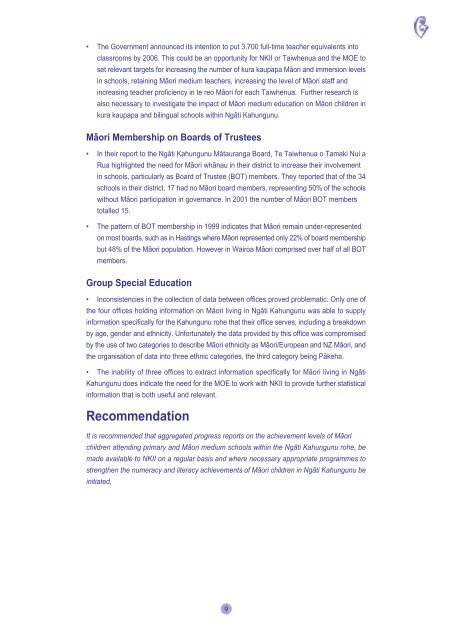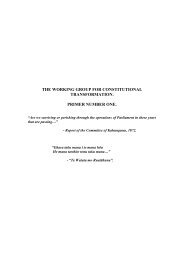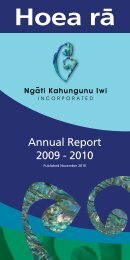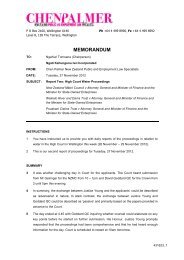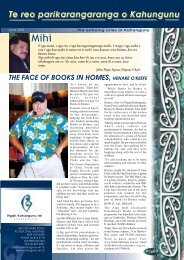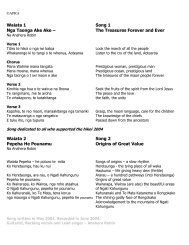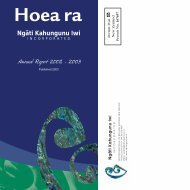Matauranga Strategy - NgÄti Kahungunu Iwi Incorporated
Matauranga Strategy - NgÄti Kahungunu Iwi Incorporated
Matauranga Strategy - NgÄti Kahungunu Iwi Incorporated
You also want an ePaper? Increase the reach of your titles
YUMPU automatically turns print PDFs into web optimized ePapers that Google loves.
• The Government announced its intention to put 3,700 full-time teacher equivalents into<br />
classrooms by 2006. This could be an opportunity for NKII or Taiwhenua and the MOE to<br />
set relevant targets for increasing the number of kura kaupapa Mäori and immersion levels<br />
in schools, retaining Mäori medium teachers, increasing the level of Mäori staff and<br />
increasing teacher proficiency in te reo Mäori for each Taiwhenua. Further research is<br />
also necessary to investigate the impact of Mäori medium education on Mäori children in<br />
kura kaupapa and bilingual schools within Ngäti <strong>Kahungunu</strong>.<br />
Mäori Membership on Boards of Trustees<br />
• In their report to the Ngäti <strong>Kahungunu</strong> Mätauranga Board, Te Taiwhenua o Tamaki Nui a<br />
Rua highlighted the need for Mäori whänau in their district to increase their involvement<br />
in schools, particularly as Board of Trustee (BOT) members. They reported that of the 34<br />
schools in their district, 17 had no Mäori board members, representing 50% of the schools<br />
without Mäori participation in governance. In 2001 the number of Mäori BOT members<br />
totalled 15.<br />
• The pattern of BOT membership in 1999 indicates that Mäori remain under-represented<br />
on most boards, such as in Hastings where Mäori represented only 22% of board membership<br />
but 48% of the Mäori population. However in Wairoa Mäori comprised over half of all BOT<br />
members.<br />
Group Special Education<br />
• Inconsistencies in the collection of data between offices proved problematic. Only one of<br />
the four offices holding information on Mäori living in Ngäti <strong>Kahungunu</strong> was able to supply<br />
information specifically for the <strong>Kahungunu</strong> rohe that their office serves, including a breakdown<br />
by age, gender and ethnicity. Unfortunately the data provided by this office was compromised<br />
by the use of two categories to describe Mäori ethnicity as Mäori/European and NZ Mäori, and<br />
the organisation of data into three ethnic categories, the third category being Päkeha.<br />
• The inability of three offices to extract information specifically for Mäori living in Ngäti<br />
<strong>Kahungunu</strong> does indicate the need for the MOE to work with NKII to provide further statistical<br />
information that is both useful and relevant.<br />
Recommendation<br />
It is recommended that aggregated progress reports on the achievement levels of Mäori<br />
children attending primary and Mäori medium schools within the Ngäti <strong>Kahungunu</strong> rohe, be<br />
made available to NKII on a regular basis and where necessary appropriate programmes to<br />
strengthen the numeracy and literacy achievements of Mäori children in Ngäti <strong>Kahungunu</strong> be<br />
initiated.<br />
9


